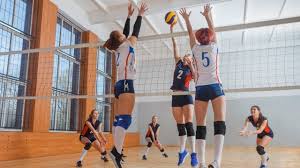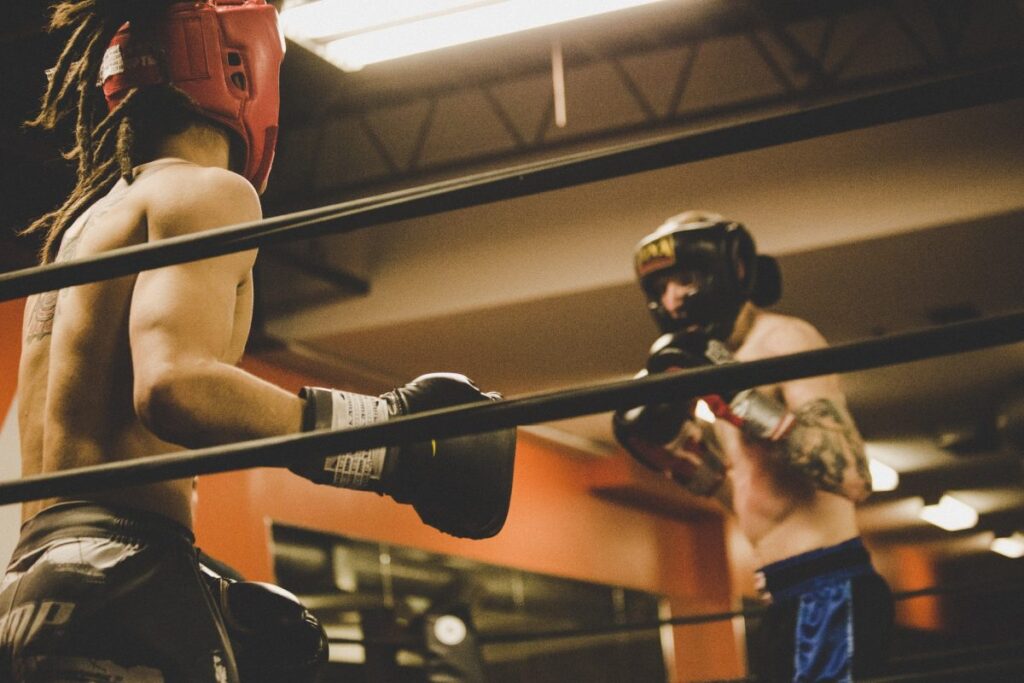
Suburi is the most fundamental part of Kendo training, and is an essential element not only for improving technique but also for strengthening mental concentration and physical strength.
In this article, we will introduce specific menus for practicing kendo effectively, from beginner to advanced, by stage.
Suburi is more than just a swinging motion; it is an important basic technique that makes up Kendo, and how you practice it is directly linked to your improvement in Kendo.
Through this article, we will explain everything about kendo practice in detail, including the correct posture, form, and even mindset, providing readers with knowledge and insight that they can use in their daily practice.
The journey to master the art of Kendo begins here.
目次
- 1 Introduction
- 2 What is Kendo practice?
- 3 Basic stance and preparation for Kendo practice swings
- 4 Practice menu for beginners
- 5 Practicing menu for intermediate players
- 6 Practicing menu for advanced users
- 7 Practice swing frequency and time
- 8 How to effectively combine Kendo practice moves
- 9 Frequently asked questions and troubleshooting
- 10 summary
Introduction
In Kendo, it is extremely important to hone basic techniques.
Among these, “suburi” is positioned as the basic practice that supports the fundamentals of kendo techniques.
By practicing practice swings, you can instill in your body the basic movements of Kendo, such as how to swing the sword, posture, and foot movements.
It is also an essential training for increasing mental concentration and cultivating a sense of unity between mind and body.
The purpose of this article is to serve as a guide for all people learning Kendo to find a practice routine that suits their level and practice effectively.
From beginners to advanced players, we provide practice methods according to each stage, and provide specific advice that will help improve each individual’s technique.
It is our hope that through this article readers will deepen their knowledge and understanding of Kendo, and that they will be able to achieve practical results in their daily practice.
Let’s explore ways to bring out the true value of Suburi to its fullest from both the spirit and technique of Kendo.

What is Kendo practice?
In Kendo, “Suburi” is the basic practice of repeatedly swinging a Shinai or Bokken in a certain format.
This practice plays an extremely important role in acquiring and honing Kendo techniques.
The purpose is to learn the correct Kendo posture through practice swings, and to teach your body the techniques to swing the sword and move your feet accurately.
Basic definition and purpose of Kendo practice
Kendo practice is a practice method for getting used to handling a sword and learning how to use your body to perform accurate strikes.
Through this practice, kendo practitioners learn the trajectory of the sword, the timing of strikes, and how to breathe when swinging the sword.
Another important purpose is to increase mental concentration, and by performing a series of movements with a calm mind, you can unify your mind and body.
The role of practice swings in improving Kendo techniques
Suburi is an essential element in improving Kendo technique, and goes beyond mere physical training and contributes to spiritual growth.
In kendo training, performing practice swings in the correct form not only steadily improves your technique, but also has the effect of deepening your understanding of your fighting stance and tactics.
Also, by repeating the practice swings, you will unconsciously learn the correct movements, and you will be able to perform accurate techniques naturally in actual battles.
Suburi practice in Kendo is not simple repetition, but deep training that requires self-insight and refinement of technique.

Basic stance and preparation for Kendo practice swings
Correct posture and proper preparation are necessary to practice Kendo.
These are extremely important as they are directly linked to accurate technique acquisition and injury prevention.
Correct posture and foot position
The basic posture in Kendo incorporates elements to ensure stability and ease of movement.
When performing practice swings, first set the position of your feet correctly. Typically, you will place your left foot one step behind you, with your toes pointing forward.
Keep your feet about shoulder-width apart, with your knees bent naturally and your center of gravity slightly forward. Keep your upper body upright, chest up, and shoulders relaxed.
Starting your practice swing from this position will improve power transmission and movement accuracy.
Warm-up exercise before starting practice swings
Before you start practicing, it is important to warm up your body properly.
As a warm-up, stretch your muscles, especially those in your shoulders, arms, hips, and legs. Exercises such as shoulder rotation, arm swing, hip rotation, and raising your knees are effective.
This increases muscle flexibility, increases range of motion, and reduces risk of injury.
Also, by doing this while taking deep breaths, you can expect to have the effect of calming your mind and increasing your concentration.
It is recommended that this stage of Kendo training be done carefully, as neglecting warm-up exercises can lead to decreased performance and increased risk of injury.

For beginners who have just started Kendo, practice swings are very helpful in learning the basic techniques.
Here, we will explain the basic practice techniques, the types of practice moves that beginners should learn, and how to practice each practice method.
Explanation of basic swing techniques
In Kendo’s practice technique, it is important to have the correct posture.
After correcting your posture, grip the bamboo or wooden sword firmly with both hands. To grip it, place your left hand at the end of the handle, and place your right hand in the middle of the handle.
The swinging motion involves raising the sword firmly above your head and then swinging it down all at once.
At this time, keep in mind that the tip of the sword points toward the ground in front of you, so that the trajectory of swinging the sword down is straight.
Also, at the moment of striking down, it is important to emit force from the abdomen, breathe in synchronization, and feel as if you are one with the sword.
Types of practice moves that beginners should learn and how to practice them
There are three main types of practice swings recommended for beginners:
-
Basic swing of the straight sword :
- Straight sword suburi is a movement that assumes the basic strikes of kendo: men, do, and kote. Repeat the raising and lowering motions to make sure that the trajectory of the sword is correct and the power is transmitted smoothly.
-
Practice swings that combine footwork :
- When practicing footwork, perform the practice swing while moving forward and backward. This will help you develop a sense of striking while moving. Start by practicing hitting the men while taking a big step forward, and gradually increase your speed and accuracy.
-
Continuous hitting practice :
- Continuous practice practice is the practice of hitting men, torso, and men in succession. Here, you will develop the skills to smoothly connect a series of movements and the sense of rhythm when striking continuously.
These practice moves can be done quietly and concentrating on your own, or you can practice them with other beginners under the guidance of a dojo.
All exercises are essential for building the technical foundation of Kendo, and it is important to improve little by little through daily practice.

For intermediate kendo practitioners, practice of suburi is a transition stage to acquiring more advanced techniques and deepening their practice.
Here, we will explain the practice swings that intermediate players should work on in order to improve their technique, as well as the compound movements that can be used to achieve them.
Practice of intermediate skills necessary for improving skills
In addition to basic techniques, practice swings for intermediate players incorporate more advanced technical elements. This includes exercises that increase speed and accuracy at the same time. Specific practice menus include the following.
-
Practice swings that emphasize speed :
- In order to increase the speed of the strike, practice speeding up and down the swing. This can be expected to improve quick reactions and technique execution in actual combat.
-
Irregular movements :
- In addition to regular practice swings, you will practice how to hit curve balls. For example, the “slope” (slope), which involves swinging the sword diagonally, is a technique that confuses the opponent.
-
Practical swings with a focus on how to relax :
- Practice swinging the sword in a relaxed manner without straining too much. This leads to efficient use of force and reduced fatigue.
Complex movements that intermediate players should try
In practice swings for intermediate players, it is important not only to perform single movements, but also to perform compound movements that combine multiple techniques. This will develop your practical application and flexibility.
-
Continuous skill practice :
- We will practice “continuous striking”, which involves performing multiple strikes in succession. Practicing hitting in succession from the men to the torso to the kote is perfect for learning the flow and coordination when attacking.
-
Practice swing while moving :
- Practice swings while walking or running, and practice accurately performing techniques while maintaining balance while moving. This will help improve your ability to adjust positioning and timing in real combat.
-
Practice moves to increase reaction speed :
- Improve your reaction speed and attack agility by practicing making many strikes in a short period of time.
By incorporating these compound movements, intermediate players can take their skills to the next level.
Incorporate these elements into your daily practice to deepen your practical application and tactical understanding.

As you become an advanced kendo expert, your practice of practice moves to a stage where you pursue further technical precision and tactical depth.
In practice training for advanced players, it is important to combine advanced technique honing with efficient practice methods.
How to improve advanced skills
Practicing for advanced players requires the following advanced techniques.
-
Improving the accuracy of short sword techniques :
- By practicing swinging with a small sword, you will hone your accurate striking techniques from short distances. This is important to increase your advantage in short-range combat during matches.
-
Irregular striking practice :
- Practice striking from various angles and heights, and learn attacks that are difficult for your opponent to predict. This includes practicing swings from different directions and hitting non-traditional striking points.
-
Advancing continuous and combination techniques :
- You will practice smoothly linking multiple techniques and hone your skills to freely control the flow of offense and defense. This increases your ability to respond to fluid situations during matches.
Efficient practice methods and advanced techniques
By adopting efficient practice methods, advanced players can get the most out of their limited practice time.
-
Purposeful practice :
- Set clear goals and focus on specific techniques and tactics for each practice session. This allows for deliberate practice and accelerates technical improvement.
-
Combination of repetition and variation :
- While you solidify your basic skills through repeated practice, you can expand your range of skills and develop flexibility by incorporating new changes on a regular basis.
-
Self-assessment using video analysis :
- By recording practice videos and analyzing your movements, you can identify areas for improvement and efficiently modify your technique.
The practice training menu for advanced players not only helps you hone your technique, but also provides practice for gaining tactical insight and understanding the psychology of battle.
Make full use of these advanced practice methods and aim for even greater heights in Kendo.

Practice swing frequency and time
In improving Kendo technique, the frequency of practice swings and the amount of practice time per session are important factors.
Maintaining appropriate practice frequency and amount will help you establish and improve your technique.
ideal practice frequency
It is recommended that you practice Kendo practice on a daily basis.
Ideally, it’s best to practice every day, five to six days a week.
This allows you to learn techniques and improve your physical strength evenly, while at the same time training your body and mind through continuous practice.
Even if you find it difficult to practice daily, you can maintain and improve your technique by practicing practice at least three days a week.
Recommended number of practice swings in one practice session
The number of practice swings in a single practice session depends on the individual’s physical strength and skill level, but it is generally recommended that 300 to 500 practice swings be performed in a single practice session.
For beginners, start with 100 repetitions and gradually increase the number of repetitions to improve your physical strength and technique.
Advanced players may perform more than 1,000 practice swings in a single practice session, but it is important to do as many practice swings as you can without straining yourself.
The important thing is to practice high-quality practice swings and maintain accurate technique and correct form.
When practicing practice swings, it is important to give meaning to each strike and concentrate on each swing, rather than just blindly performing the number of strikes.
This can be expected to lead to efficient technical improvement and improve the overall quality of Kendo techniques.

How to effectively combine Kendo practice moves
When practicing Kendo, combining practice with other training methods will effectively contribute to improving your skills.
Here we’ll explain how to combine practice with other training methods, and how to integrate it into your overall kendo skill development.
Combination of practice swings and other training methods
Suburi is the foundation of Kendo and is an important practice that provides a foundation for improving technique, but it can be combined with other training to develop a more comprehensive skill set, such as:
-
Basic batting practice :
- After honing your technique with practice swings, you will move on to basic batting practice and learn about distance and timing with actual opponents. This will help you understand how the techniques you have cultivated during practice will be utilized in actual combat.
-
Iaido formal practice :
- By practicing using the Iaido style, you can further refine the way you draw and swing your sword. Iaido movements effectively teach you the flow and how to use your body necessary for Kendo strikes.
-
Physical strength training :
- Along with practice swings, you can increase your endurance and explosive power by running and doing strength training. This allows you to maintain high performance for a long time during a match.
How to integrate it into your overall Kendo skill development
In order to improve your Kendo skills, it is important to perform these trainings in an integrated manner.
Create a well-planned training schedule with clear objectives and expected results for each session.
For example, it is effective to divide your training by focusing on practice swings a few days a week, while focusing on batting practice and physical training on other days.
In addition, by reflecting and reviewing your techniques and receiving regular feedback from your instructor and senior swordsmen, you can further improve the quality of your practice.
By combining these practice methods, you will not only improve your Kendo techniques, but also your spiritual growth, increasing your overall strength as a swordsman.

Frequently asked questions and troubleshooting
Various problems may occur during Kendo practice practice.
Here we will introduce some such common problems and their solutions.
This allows for more effective practice and leads to improved technique.
Common problems and solutions during practice
-
Problem: Pushing too hard
- Solution : In Kendo, it is important to move in a relaxed state. If you feel strained, first take a deep breath, relax your shoulders and arms, and consciously try to relax. It is also effective to loosen your muscles by stretching before practice.
-
Problem: I can’t swing it correctly
- Solution : Validation of correct form is required. It is best to have a teacher or experienced person look at your form and receive guidance. Also, practicing in front of a mirror while watching your movements will make self-correction easier.
-
Problem: I get tired easily
- Solution : Easily fatigued is often caused by a lack of physical strength. It is important to improve your endurance by incorporating regular physical training. It is also effective to gradually increase the number of practice swings to get your body used to it.
-
Problem: Difficulty concentrating
- Solution : Staying focused requires mental training. It is effective to set aside time to concentrate and practice, even if it is only for a short period of time, and gradually increase that time. In addition, by increasing the variety of exercises, you can continue practicing while having fun without getting bored.
By practicing appropriate solutions to these problems, you can practice kendo practice more effectively.
It is important to hone your skills through daily practice and walk steadily on the path to improvement.

summary
In Kendo, practicing practice is a fundamental and important practice that not only contributes to improving technique, but also to spiritual growth.
This section explains the importance of continuing practice practice and provides advice for future practice.
The importance of continuing practice swings
By continuing to practice Kendo practice, the techniques will naturally become ingrained in your body, and you will be able to perform accurate techniques in any situation.
Also, through daily practice, you will strengthen your mental strength and improve your concentration and tenacity.
Kendo requires more than just physical strength and technical training; it also requires a heartfelt approach to each movement, so it can be said that persistence is a strength.
Advice for future practice
-
Regular goal setting :
- In order to improve your skills, it is important to set short-term and long-term goals and practice systematically toward them. Having clear goals will keep you motivated and make your practice more effective.
-
Introducing a variety of practice methods :
- By incorporating not only practice swings but also interpersonal practice and match-style practice, it is possible to check skills in a form that is close to actual combat. Also, incorporating training from other martial arts or sports may lead to new discoveries and improved techniques.
-
Leverage continuous feedback :
- I learn a lot not only from feedback from my instructors, but also from interacting with my fellow dojo members. By observing other people’s movements and comparing them with your own, you can improve on the points you overlooked.
The art of Kendo is not something that can be mastered overnight.
By continuing to practice practice every day, you will improve not only your technique, but also your humanity as a kendo practitioner.
Please use this advice in your future practice and aim to grow both in Kendo spirit and technique.










